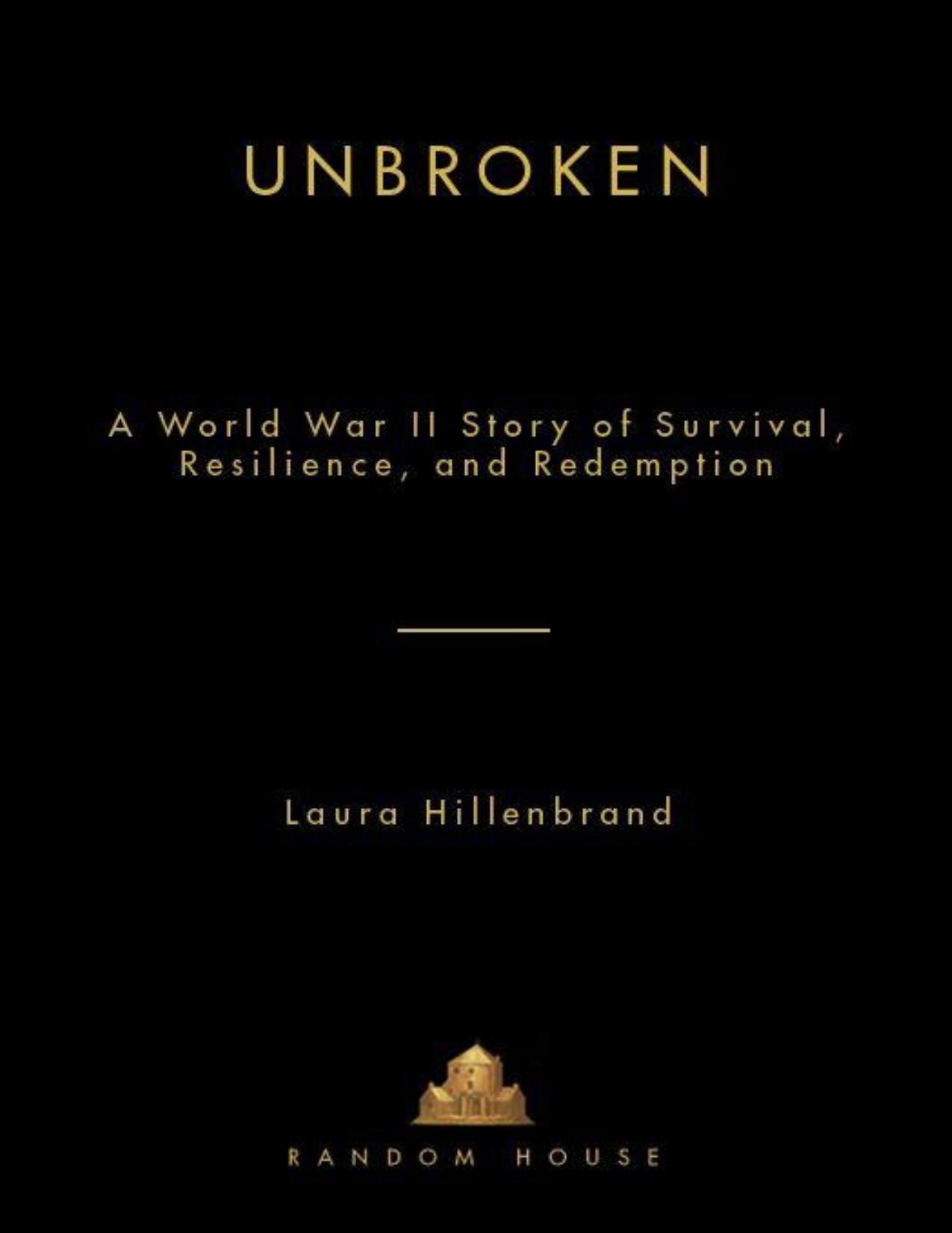Unbroken: A World War II Story of Survival, Resilience, and Redemption by Hillenbrand Laura

Author:Hillenbrand, Laura [Laura, Hillenbrand,]
Language: eng
Format: epub, mobi, pdf
Published: 2010-11-27T21:42:01.057000+00:00
Twenty-five
B-29
ON ONE OF THE LAST DAYS OF OCTOBER 1944, LOUIE pushed a wheelbarrow over the Omori bridge, through the vilage at the bridge’s end, and into Tokyo.
With him were another POW and a guard; they’d been ordered to pick up meat for the POW rations. Louie had been in Japan for thirteen months, but this was the first time that he had passed, unblindfolded, into the society that held him captive.
Tokyo was bled dry. There were no young men anywhere. The war had caused massive shortages in food and goods, and the markets and restaurants were shuttered. The civilians were slipshod and unbathed. Everyone knew that the Americans were coming, and the city seemed to be holding its breath.
Teams of children and teenagers were shoveling out slit trenches and tearing down buildings to make firebreaks.
Louie, the other POW, and the guard arrived at a slaughterhouse, where their wheelbarrow was fil ed with horse meat. As they pushed it back toward Omori, Louie looked up at a building and saw graffiti scrawled over one wal . It said, B Niju Ku. The first character was simple enough, the English letter B. Louie knew that niju meant twenty and ku meant nine, though he didn’t know that ku carried another meaning: pain, calamity, affliction. Louie walked the wheelbarrow into Omori, wondering what “B twenty-nine” referred to, and why someone would write it on a wal .
——
At ten minutes to six on the morning of November 1, 1944, a wondrous American plane lifted off a runway on Saipan. Its size boggled the imagination: 99
feet long, 141 feet from wingtip to wingtip, almost 30 feet high at the tail, and weighing 120,000 pounds or more loaded, it dwarfed the famously huge B-24. Powered by four 2,200-horsepower engines—each engine almost twice as powerful as each of those of the B-24—it could rocket across the sky at up to 358 miles per hour and carry giant bomb loads. A B-24 didn’t have a prayer of making it from Saipan to Japan’s home islands and back. This plane could do it. It was the B-29 Superfortress, and it would bring down Japan.
The bomber, soon to be named Tokyo Rose as a mocking homage to the women who broadcast Japanese propaganda, was piloted by Captain Ralph Steakley. That morning, he flew his plane north. The plane split the air nearly six miles up. Above was a sky of intense blue; below, sliding over the horizon, came Japan.
B-29s had been used a handful of times over Japan, in raids launched from China, beginning four and a half months earlier. Largely because of the difficulty of supplying the Chinese bases and flying the vast distances between those bases and Japan, the missions had been ineffective. But to the Japanese, the swift leviathans were terrifying, inspiring the graffiti that Louie had seen. Three weeks after the first China-based raid, Saipan had been captured, and American plans had shifted to launching B-29s from there. Steakley’s was the first run from Saipan to Tokyo, which hadn’t seen an American plane since the Doolittle raid in 1942.
Download
Unbroken: A World War II Story of Survival, Resilience, and Redemption by Hillenbrand Laura.epub
Unbroken: A World War II Story of Survival, Resilience, and Redemption by Hillenbrand Laura.mobi
Unbroken: A World War II Story of Survival, Resilience, and Redemption by Hillenbrand Laura.pdf
This site does not store any files on its server. We only index and link to content provided by other sites. Please contact the content providers to delete copyright contents if any and email us, we'll remove relevant links or contents immediately.
| Afghan & Iraq Wars | American Civil War |
| American Revolution | Vietnam War |
| World War I | World War II |
Waking Up in Heaven: A True Story of Brokenness, Heaven, and Life Again by McVea Crystal & Tresniowski Alex(37005)
Empire of the Sikhs by Patwant Singh(22173)
We're Going to Need More Wine by Gabrielle Union(18075)
Hans Sturm: A Soldier's Odyssey on the Eastern Front by Gordon Williamson(16654)
Leonardo da Vinci by Walter Isaacson(11906)
The Radium Girls by Kate Moore(10910)
Educated by Tara Westover(7065)
Tools of Titans by Timothy Ferriss(6952)
How to Be a Bawse: A Guide to Conquering Life by Lilly Singh(6694)
The Last Black Unicorn by Tiffany Haddish(5075)
Permanent Record by Edward Snowden(5000)
The Rise and Fall of Senator Joe McCarthy by James Cross Giblin(4848)
Promise Me, Dad by Joe Biden(4451)
The Wind in My Hair by Masih Alinejad(4425)
The Crown by Robert Lacey(4106)
A Higher Loyalty: Truth, Lies, and Leadership by James Comey(4034)
The Iron Duke by The Iron Duke(3640)
Joan of Arc by Mary Gordon(3260)
How to be Champion: My Autobiography by Sarah Millican(3188)
